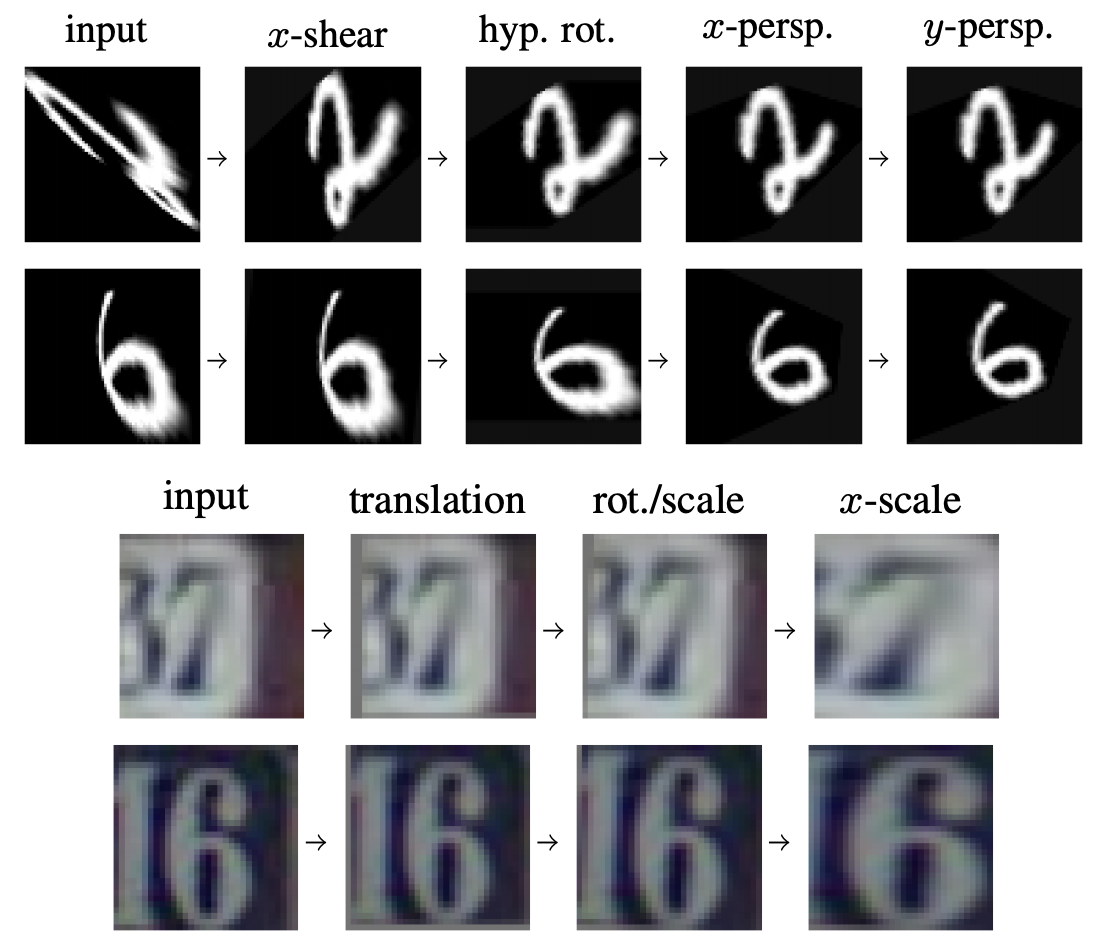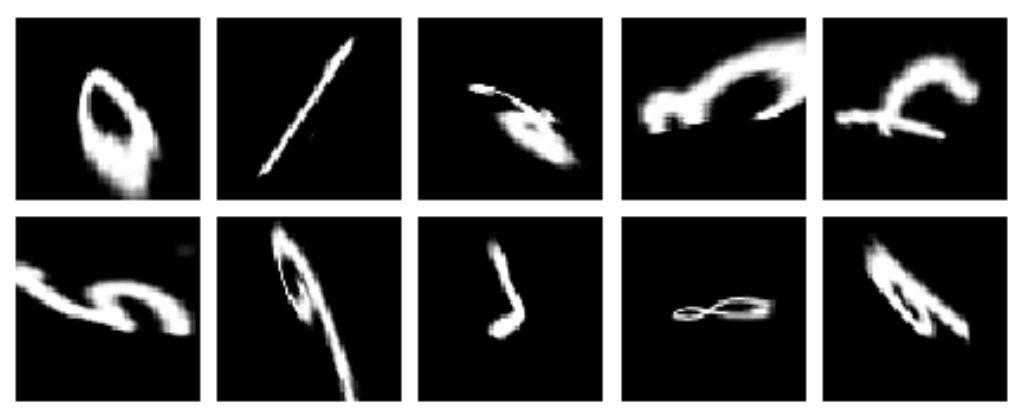stanford-futuredata / Equivariant Transformers
Projects that are alternatives of or similar to Equivariant Transformers
Equivariant Transformer Networks
Equivariant Transformer (ET) layers are image-to-image mappings that incorporate prior knowledge on invariances with respect to continuous transformation groups. ET layers can be used to normalize the appearance of images prior to classification (or other operations) by a convolutional neural network.
More details can be found in our ICML 2019 paper: https://arxiv.org/abs/1901.11399.
Requirements
- python >=3.6
- pytorch >=1.0 (https://pytorch.org/get-started/locally/)
- fire (
pip install fire/conda install fire -c conda-forge)
Datasets
To download and preprocess datasets, run:
python datasets.py projective_mnist --data_dir=<PATH>
for the Projective MNIST dataset, and
python datasets.py svhn --data_dir=<PATH>
for the SVHN dataset.
This will download the requested dataset to the directory indicated by PATH and will write three files: train.pt, valid.pt and test.pt.
These files will be used by the experiment scripts.
Pretrained Models
Pretrained models can be found in the pretrained directory.
These can be loaded by simply setting the load_path argument for the corresponding Model subclass:
from experiment_mnist import MNISTModel
from experiment_svhn import SVHNModel
mnist_model = MNISTModel(load_path='pretrained/etn-projmnist-8x.pt')
svhn_model = SVHNModel(load_path='pretrained/etn-resnet34-svhn.pt')
Usage
There are two scripts for running the experiments described in the paper: experiment_mnist.py and experiment_svhn.py.
These scripts come with preset hyperparameters for each task that can be overridden by setting the corresponding flags.
To train a model on the Projective MNIST dataset, run:
python experiment_mnist.py train --train_path <PATH>/train.pt --valid_path <PATH>/valid.pt [--save_path <SAVE_PATH>]
The save_path flag lets us specify a path to save the model that achieves the best validation accuracy during training.
To change the set of transformers used by the model, we can use the tfs flag to specify a list of class names from the etn.transformers module. For example:
python experiment_mnist.py train ... --tfs "[ShearX, HyperbolicRotation]"
To train a model without any transformers, we can simply set tfs to the empty list []:
python experiment_mnist.py train ... --tfs []
We can also set the coordinate transformation that's applied immediately prior to classification by the CNN:
python experiment_mnist.py train ... --coords logpolar
Therefore, to train a bare-bones model without any transformer layers or coordinate transformations, we can run:
python experiment_mnist.py train ... --tfs [] --coords identity
Feel free to play around with different combinations of transformers and coordinate systems!
To train a non-equivariant model, we can set the equivariant flag to False:
python experiment_mnist.py train ... --equivariant False
To change the device used for training, we can set the device flag (this is set to cuda:0) by default:
python experiment_mnist.py train ... --device cuda:1
To evaluate a saved model on the test set, run:
python experiment_mnist.py --load_path <SAVE_PATH> test --test_path <PATH>/test.pt
The experiments on the SVHN dataset can be run in same manner by calling experiment_svhn.py instead of experiment_mnist.py.
These scripts can also be called from a Jupyter Notebook by importing the MNISTModel and SVHNModel classes.
In a notebook, we can visualize training progress using the show_plot parameter.
This produces a live plot of the loss and validation error as training progresses.
from experiment_mnist import MNISTModel
model = MNISTModel(...)
model.train(..., show_plot=True, ...)
For more training options, see the __init__ and train functions for the base experiments.Model class and its subclasses in experiment_mnist and experiment_svhn.
Citation
If you've found this repository useful in your own work, please consider citing our paper:
@inproceedings{tai2019equivariant,
title={{Equivariant Transformer Networks}},
author={Tai, Kai Sheng and Bailis, Peter and Valiant, Gregory},
booktitle={International Conference on Machine Learning},
year={2019}
}


